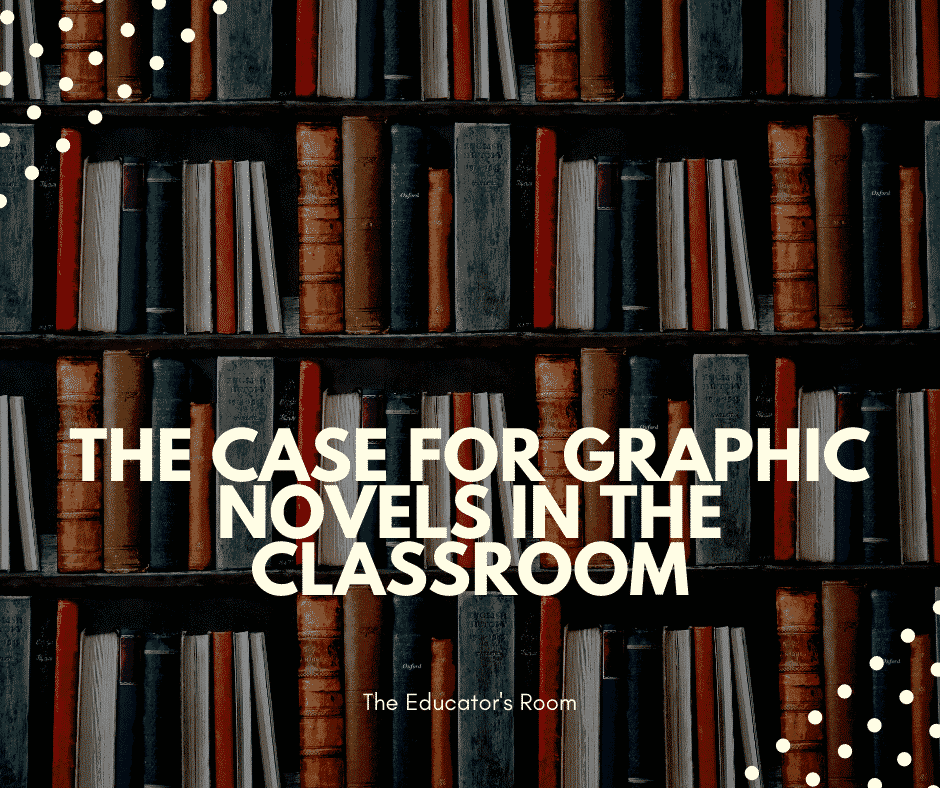Right now, the world is flooded with articles about teaching at home and adjusting to teaching during this global pandemic. This is not going to be one of those articles. Instead, this article is going to focus on graphic novels and their place in the classroom. To clarify, when I say “graphic novels,” I’m specifically talking about classic literature adaptations. Personally, I am getting ready for next year and not currently thinking about how to Zoom my lessons.
Earlier this year, I had a conversation with my students about literature. We had been reading a textbook that had a portion of The Odyssey in it. Not only was there a portion of The Odyssey, it included part of the graphic novel version. My students loved the combination, and they had a few good reasons. Some students found that the illustrated version kept their attention more. Others, particularly those with learning disabilities, found that they understood the written text better because they understood the graphic novel version. Maybe this could be a way to introduce students to the wonders of the classics?
Do They Count?
A big argument against using graphic novels in the classroom is that they aren’t technically literature. Literature can be defined as “superior written works.” Should graphic novels count as literature? Some argue no, those graphic novels make things too simple. The illustrations can be brutal, and the story can be warped. All that means, however, is that students should be encouraged to read the graphic novels critically.
But what makes something a classic? Is it the way the story is packaged? Or is it the story itself? The story of Pride and Prejudice is timeless. Why would adding illustrations change that? To many modern educators, it doesn’t. The concepts are still there, just retooled for a new audience. Beth Gillis, in a round table on Cult of Pedagogy, says this about graphic novels in the classroom, “if the alternative is for my students to never finish a book, I’ll put a graphic novel in their hands any day.”
In addition to the power of graphic novels to share the classics with a new audience, there is another reason to include them in the classroom. Students do not just need to learn to read text-they need to learn to think critically. Graphic novels, with their abundance of illustrations, provide another avenue to practice that. Students are always surrounded by images. Teaching them how to critically assess those images should be part of modern schooling.
Not only do graphic novels exist in English classrooms, but there are graphic novel tales of historical events and people. The same advantages are present there. Students can engage with the text in new ways, learn to pick up visual cues and interpret the same thing in a variety of forms.
Advantages of Graphic Novels
There are countless adaptations of classic literature in graphic novel form. These are often engaging. Some students are more likely to engage with the classics in this way. When students are interested in a topic, they are more engaged and also remember the content better. When it comes to stories like The Iliad and The Odyssey, some of the languages can be difficult for a modern audience. By putting these in graphic novel form, the stories can reach a wider audience.
The graphic novel format can be helpful for a variety of students. Those who are English language learners can find additional supports in the illustrations. Students who struggle with reading can find assistance in this format. When it comes to self-select novels, classic literature can be a hard sell. Many of my students only read the classics that they are required to read. I want my students to become critical readers. For many students, this is a fun way to engage with the text.
Final Thoughts
There are many reasons to include graphic novels in the classroom. Increased student engagement and understanding is a major factor for many teachers. Students also seem to like them, another positive thing. Maybe it’s time to add these to our bookshelves, along with the classics and some new contemporary novels.






